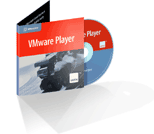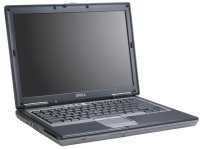 Last week Jordi Fernández gave me a quick hands-on tutorial for a working Beryl setup on Debian. He owns a Dell Latitude D620 running Debian GNU/Linux just like mine, so leeching his setup was even easier for me. What sold me immediately into Beryl is that you don’t need to install Xgl.
Last week Jordi Fernández gave me a quick hands-on tutorial for a working Beryl setup on Debian. He owns a Dell Latitude D620 running Debian GNU/Linux just like mine, so leeching his setup was even easier for me. What sold me immediately into Beryl is that you don’t need to install Xgl.
Basically I edited /etc/X11/xorg.conf and added these lines to the Device section:
Option "RenderAccel" "true" Option "backingstore" "true" Option "XAANoOffsetScreenPixmaps" "true" Option "AddRGBGLXVisuals" "On"
and added a new section to the very end:
Section "Extensions"
Option "Composite" "Enable"
EndSection
My updated xorg.conf is available right here.
After restarting X (ctrl-alt-Backspace for lazy users like me) you can type this on a terminal:
$ beryl-manager & $ beryl
I have the official nvidia drivers (1.0-8776) installed via module-assistant and a Beryl version that is kind of old (0.2.0+svn20070205-r3687+imudebian0, rather ancient in Internet Time). This worked immediately for me but Your Mileage May Vary.
There you have it. A working beryl setup in a few minutes. Thanks to Jordi for this tutorial and the rather impressive demo that followed, and to the Compiz and Beryl developers for their hard work.
[tags]uHOWTO, Dell, D620, debian, linux, X, Beryl[/tags]
 Last night I opened KDE control center to change my desktop settings and I was shocked when I found that kcontrol was empty but for the OBEX Devices panel. Alll the modules that were supposed to be inside kcontrol where inside the KDE “Lost and Found” folder instead. A superficial search in the KDE mailing lists returned a few matches about this problem on KDE4 (did you know that kcontrol is currently unmaintained and that it’s gonna die real soon now?) but I’m currently in KDE 3.5.5 so that doesn’t apply to me.
Last night I opened KDE control center to change my desktop settings and I was shocked when I found that kcontrol was empty but for the OBEX Devices panel. Alll the modules that were supposed to be inside kcontrol where inside the KDE “Lost and Found” folder instead. A superficial search in the KDE mailing lists returned a few matches about this problem on KDE4 (did you know that kcontrol is currently unmaintained and that it’s gonna die real soon now?) but I’m currently in KDE 3.5.5 so that doesn’t apply to me. Voilá! Now my kcontrol is fully populated again.
Voilá! Now my kcontrol is fully populated again.
 VMware has made available
VMware has made available  I managed to get TwinView working on the Dell Latitude D620 under Debian GNU/Linux and I’ve been using it for a few weeks now without any problem whatsoever.
I managed to get TwinView working on the Dell Latitude D620 under Debian GNU/Linux and I’ve been using it for a few weeks now without any problem whatsoever. As i
As i